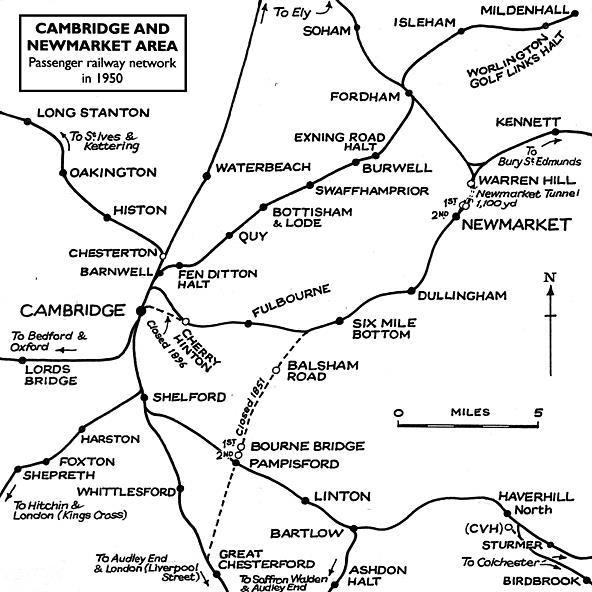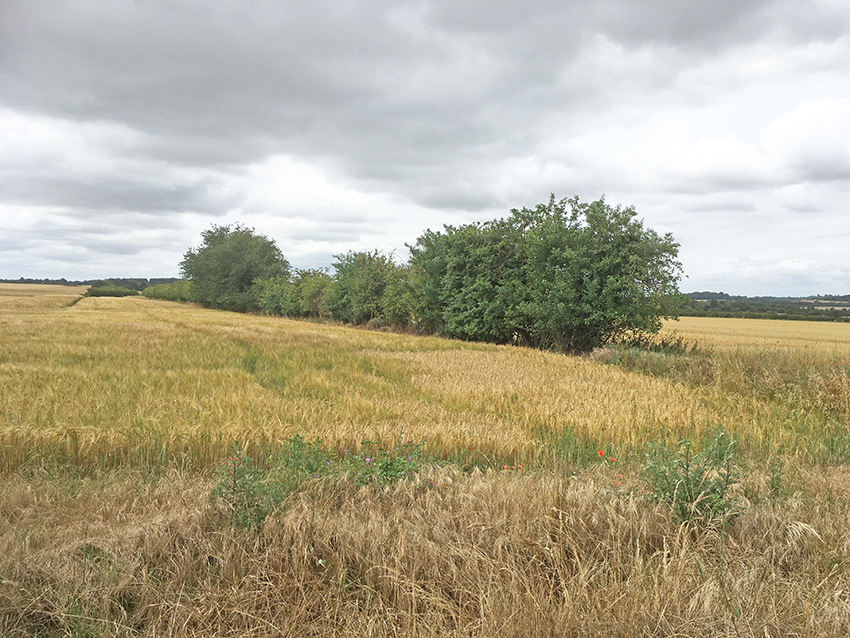While many new railways were constructed primarily to serve industry, the influential Jockey Club was of the opinion that “a railway to Newmarket would not only be a great convenience to parties anxious to participate in the truly British sport of racing but would enable Members of Parliament to superintend a race and run back to London in time for the same night’s debate“. As a result, the Newmarket & Chesterford Railway Company’s Bill was unopposed and had an easy passage through Parliament!
The station at Balsham Road was opened on 4 April 1848 and closed on 9 October 1851 - the Newmarket & Chesterford Railway line's closure was one of the earliest line closures in England. The position of Balsham Road station along with the two Bourne Bridge Stations on this line are shown on this map:

There is nothing left to see at the site of Balsham Road station, but this aerial view shows its position in relation to the modern Balsham Road between Balsham and Fulbourn (station = yellow dot), and the nearby A11 road can be seen in both the 19th century map and the modern aerial view. The cache (position indicated by a red dot) is hidden a short drive away as the main Balsham Road is extremely busy and there are few safe places to stop near the position of the old station:

Considering the railway was only in existence for just over 3 years, it is interesting how much of an impact the line of the track has had on the modern landscape as can be seen on the aerial photo above. This view taken from close to the old station's position (looking south and taken in July 2020) shows the course of where the railway line would have been:

For more information on SideTracked Caches please visit www.SideTrackedSeries.co.uk